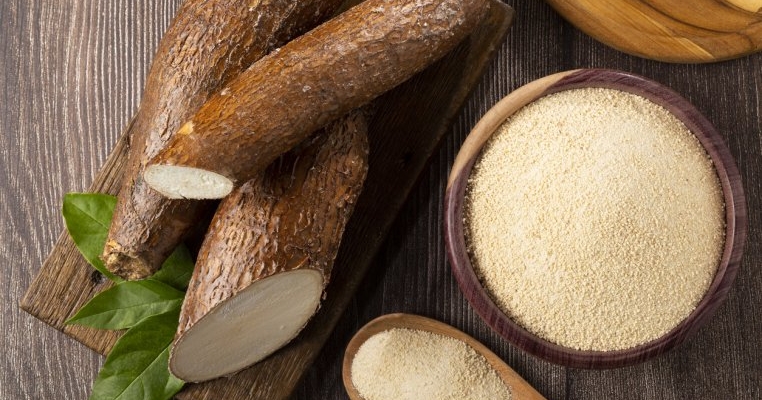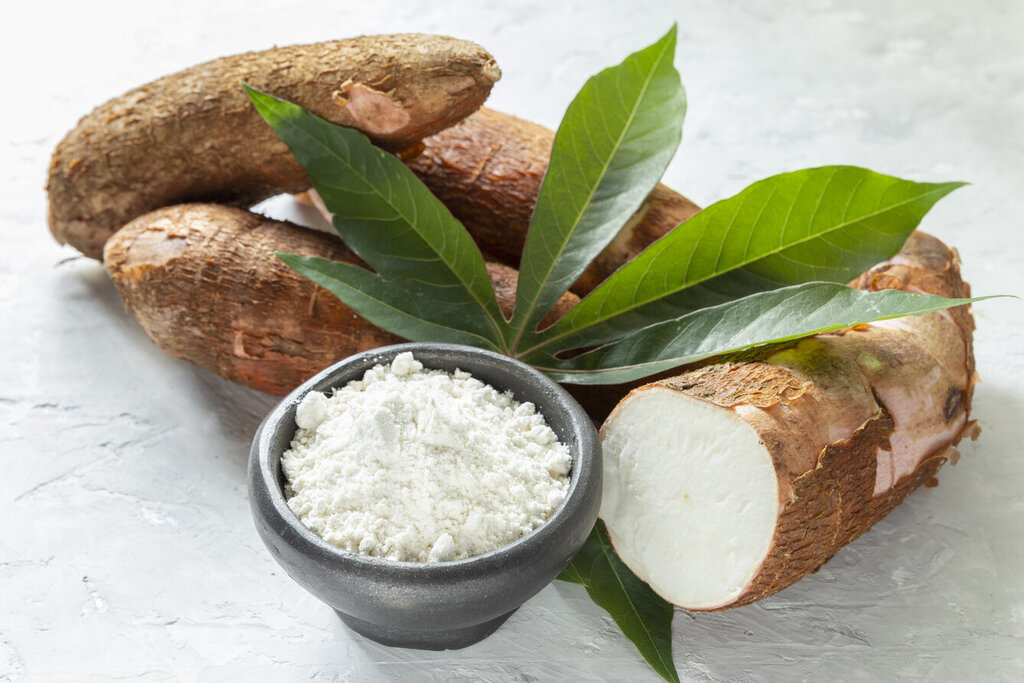When it comes to creating healthier desserts, few ingredients are as versatile and underestimated as tapioca flour. Also known as tapioca starch, this naturally gluten-free ingredient has earned its place in modern kitchens for its unique texture-enhancing properties and neutral taste.
Whether you’re baking, thickening, or experimenting with plant-based recipes, tapioca flour can help you achieve the perfect consistency without compromising on nutrition or flavor.
What Is Tapioca Flour?
Tapioca flour is derived from the cassava root, a starchy tuber native to South America. After peeling, washing, and pulping the root, the starch is extracted, dried, and ground into a fine, white powder. Unlike wheat-based flours, tapioca flour is free from gluten, grains, and nuts, making it ideal for people with food sensitivities or those following paleo, vegan, or gluten-free diets.
Key Properties of Tapioca Flour
- Neutral Flavor
Tapioca flour has a very mild taste that doesn’t overpower other ingredients—perfect for desserts where flavor balance matters. - Excellent Thickening Agent
When mixed with liquid and heated, tapioca flour forms a smooth, glossy gel, ideal for puddings, pie fillings, and fruit sauces. - Elasticity and Chewiness
It adds a desirable stretch and chewiness to baked goods, which is especially useful in gluten-free recipes that often lack structure. - Crisp Texture in Baking
Tapioca flour helps achieve light, crispy textures in cookies, waffles, and crusts, making it a great addition to baked treats. - Digestibility
Tapioca is easy on the digestive system and provides a quick source of carbohydrates—great for those needing gentle energy support.
How to Use Tapioca Flour in Healthy Desserts
1. Gluten-Free Baking
Combine tapioca flour with other flours like almond, coconut, or oat flour to mimic the texture of traditional wheat-based desserts. It helps bind ingredients and gives a soft, chewy consistency to brownies, cakes, and muffins.
2. Puddings and Custards
Tapioca flour can replace cornstarch or gelatin as a thickener. Mix it with a bit of cold liquid first to prevent clumping, then heat it gently until it thickens to a silky texture.
3. Crispy Toppings and Crusts
Use tapioca flour in fruit crumbles or pie crusts to add crispness. It also helps fillings hold their shape without becoming watery.
4. Vegan Desserts
Since it can create a gel-like texture, tapioca flour is often used to give structure to vegan cheesecakes, mousses, and even plant-based ice creams.
5. Bubble Tea Pearls
The famous chewy “boba” pearls in bubble tea are made from tapioca starch! Making your own allows you to control sweetness and additives for a healthier version.
Tips for Working with Tapioca Flour
- Use sparingly: A little goes a long way. Too much can make desserts gummy.
- Mix with other flours: It performs best as part of a blend.
- Add it last: When thickening liquids, add tapioca slurry (flour + water) toward the end of cooking to prevent over-thickening.
Health Benefits at a Glance
While tapioca flour is mostly composed of carbohydrates, it’s naturally low in fat, sodium, and allergens. It’s a great option for those seeking a gentle, clean ingredient to build texture and volume in desserts. For added nutrition, combine it with whole-food flours or protein-rich ingredients like nut butters, seeds, or Greek yogurt.

Tapioca flour is a kitchen essential for anyone exploring healthy, allergy-friendly, or gluten-free baking. Its adaptability and natural thickening power make it perfect for creating desserts that are both indulgent and wholesome.
Whether you’re whipping up a creamy pudding, chewy brownies, or crisp cookies, tapioca flour offers the perfect balance between texture and health.

